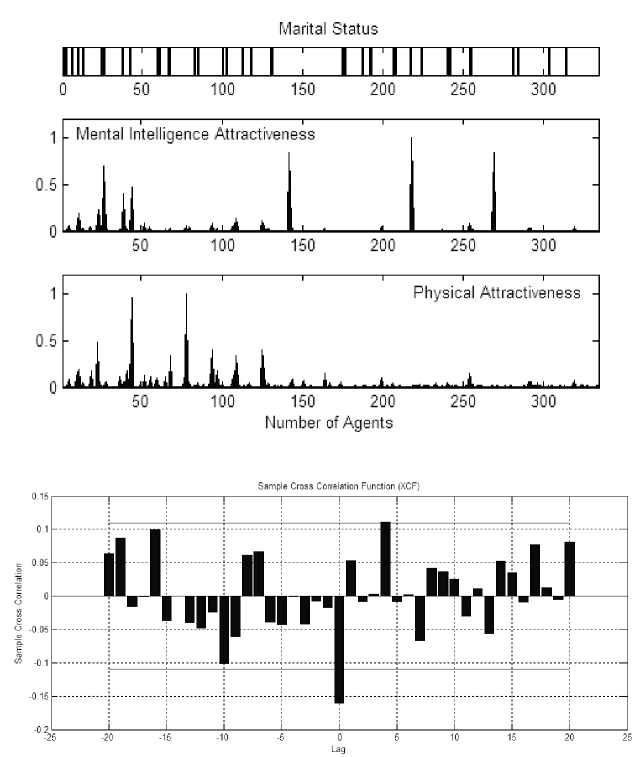in figure 3. This figure shows the correlation that could be captured in the simulation
between the agents with high competitiveness in the perspective of their intelligence and
the one in the eyes of physical performances. However, as the simulations conducted in
figure 3 and 4 emerged from the “normal” micro properties of the system based on some
findings in the observation in the field of evolutionary psychology, we can say that by
learning through the resulting simulation, theoretically we could see that there is no exact
correlations between intelligence and the physical outlook of the agents. By using the
standard micro-properties of the artificial world, we could see that it is very rare to find an
agent with significantly high attractiveness of mental intelligence ( qm (int elligence) (t) ) and
simultaneously the most attractive physically (Qp(t) ), also with the most attractive personal
psychological traits (qm(p)(t)), e.g.: humor, romantic behavior to the opposite sex.

Figure 3. The attractiveness of a sexual agent in as represented in the attractiveness related to
intelligence and physical appearance (above) . The correlation coefficient of the qm (int elligence) (t)and qm(p)(t)
as evaluated by corresponding mate candidates in the fuzzy fashion (below).
Is this some kind of accentuation to the broad commonsensical thoughts about this
issue? Some further empirical works could be conducted in order to support this claim for it
Page | 5
More intriguing information
1. Wettbewerbs- und Industriepolitik - EU-Integration als Dritter Weg?2. From Aurora Borealis to Carpathians. Searching the Road to Regional and Rural Development
3. AGRICULTURAL TRADE IN THE URUGUAY ROUND: INTO FINAL BATTLE
4. Internationalization of Universities as Internationalization of Bildung
5. Feeling Good about Giving: The Benefits (and Costs) of Self-Interested Charitable Behavior
6. Comparison of Optimal Control Solutions in a Labor Market Model
7. The name is absent
8. Methods for the thematic synthesis of qualitative research in systematic reviews
9. Migration and Technological Change in Rural Households: Complements or Substitutes?
10. The Tangible Contribution of R&D Spending Foreign-Owned Plants to a Host Region: a Plant Level Study of the Irish Manufacturing Sector (1980-1996)